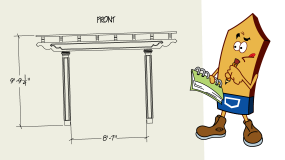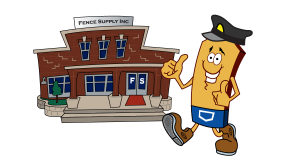 All this talk of zombies in the media may have caused you to start thinking: “If the zombie apocalypse ever happened for real, would I be one of the survivors, or would I be we wandering around, dead-eyed, hungry for brains?” Well, Fence Supply Inc., your go-to fence company in Dallas, TX, is here to tell you how to zombie-proof your property in Dallas, TX with a chain link fence.
All this talk of zombies in the media may have caused you to start thinking: “If the zombie apocalypse ever happened for real, would I be one of the survivors, or would I be we wandering around, dead-eyed, hungry for brains?” Well, Fence Supply Inc., your go-to fence company in Dallas, TX, is here to tell you how to zombie-proof your property in Dallas, TX with a chain link fence.
Here at Fence Supply Inc. we believe the best offense is a good defense, and we recommend a chain link fence in Dallas, TX for several reasons. First, they’re strong, and you need a strong fence to protect you against the swarming hordes. Second, you can see through them, so you can tell the difference between your flesh-hungry enemy and innocent victims fleeing their rampage. Third, a chain link fence in Dallas, TX offers the most cost effective solution for protecting your property.
Chain Link for Zombies
If you’re zombie-proofing your property, you’re going to want the strongest fence possible, and this is where chain link comes in. Chain link is made of galvanized steel wire, so it’s tough and rust-proof. You’d need wire cutters to get through a chain link fence, and zombies don’t have the brain function to operate those kinds of tools.
If you’re going to be installing a chain link fence in Dallas, TX to protect yourself from zombies, you want to make sure your fence is both tall enough and strong enough to keep them out. Fence Supply Inc. sells chain link fabric (the actual chain link part of the chain link fence) in heights from 4′-12′. Now, zombies can’t climb, it’s true, but you’re going to want a tall fence to make sure they won’t be able to climb up over the piles of zombies you’ve already slain and make it in that way. So we’d recommend a 6′-12′ chain link fence for your Dallas, TX property.
We also sell different thicknesses, or gauges, of wire for your chain link fence in Dallas, TX. The most important thing to remember is that in gauges, the smaller the number, the thicker the wire. So a gauge of 6 is thicker than a gauge of 8, and so on. At Fence Supply Inc. we sell chain link fabric from 11 1/2 gauge to 6. To protect against zombies’ swarming behavior, which could bring a weak fence down, we recommend the strongest, thickest gauge you can afford, a 6 or 8 at most, for your chain link fence in Dallas, TX.
See your enemy
You want to have clear views of what’s going around your property so you can properly anticipate the next zombie attack, but you don’t want to sacrifice strength and safety. Your chain link fence in Dallas, TX will allow you to clearly see any danger approaching, so you can take appropriate action. Also, what if your friends and neighbors escape and head for your sanctuary? You’ve got to be able to tell friend from foe, and your chain link fence in Dallas, TX will give you the sight lines to do so.
“But isn’t chain link fence ugly?” you might be saying. Well, it won’t look so ugly when it’s standing between you and drooling certain death. However, if you’d like something that is a little more attractive but just as sturdy as a traditional chain link fence in Dallas, TX, Fence Supply Inc. offers chain link fabric that is coated in either black or green vinyl, so your fence will look good while keeping you safe.
Cost effectiveness
Chain link fencing in Dallas, TX is one of the most cost-effective perimeter security solutions. Whether you need a protection for your business or your home, or you are looking for effective protection for your newest construction project, chain link will be the most affordable option to quickly and easily secure the premises.
With a chain link fence in Dallas, TX protecting you from the shuffling zombie hordes, you’ll have enough money left over to stock up on survival supplies and, ahem, anti-zombie munitions.
Fence Supply Inc. is the fence company in Dallas, TX that carries all the supplies you need to make your property a zombie-proof fortress with a chain link fence. We carry chain link fabric, chain link tubing and pipes, gates, accessories, and even temporary chain link barriers to keep you safe from zombies on the go.













